A Complete Guide to Document Translation: What You Need to Know

Summary
Navigating document translation can be overwhelming, especially when accuracy and cultural nuances are at stake. Whether for legal compliance, business operations, or personal needs, understanding the importance of quality document translation ensures success. This guide will provide the insights you need to choose the right service, avoid common pitfalls, and ensure that your translations are professional, reliable, and culturally relevant.
1. Understanding the Importance of Accurate Document Translation
Translation isn’t just about swapping words from one language to another. It involves transferring meaning, tone, and the purpose of the document into the target language while respecting cultural nuances. A literal translation may preserve words but fail to convey the intended message, especially in legal, marketing, or technical documents.
Legal Compliance
In many sectors, especially in legal, financial, and regulatory fields, precise translation is a requirement. One minor error in the translation of a merger agreement could lead to legal disputes and financial consequences. Inaccurate immigration paperwork can lead to delayed visas or residency applications, potentially costing time and money.
Business Communication
Global businesses depend on clear communication across borders. Documents such as contracts, proposals, financial reports, and marketing materials must be translated accurately to maintain brand consistency and avoid costly errors. A mistranslated price list, for example, could lead to undercharging or overcharging clients, affecting profitability and relationships.
Cultural Sensitivity
Translation must not only be linguistically accurate but also culturally appropriate. Missteps in cultural adaptation can result in misunderstandings or even offense. For instance, a humorous ad that works in one language might not have the same impact, or it might even be culturally inappropriate in another. Additionally, units of measurement, dates, and local references must be adjusted accordingly.
Professional Document Translation
While machine translation tools have come a long way, they still can’t replace human expertise when it comes to specialized documents such as legal contracts or technical manuals. Professional translators have the knowledge to ensure that translations are accurate, contextually appropriate, and legally compliant. They can also provide notarized translations when required by government or court authorities.
2. Different Types of Document Translation Services
Not all documents require the same type of translation. Depending on the purpose and content of the document, different translation services may be required. Here are some of the most common types of document translation:
1. Business Document Translation
Business documents such as contracts, financial reports, marketing materials, and business proposals need to maintain the brand voice, adhere to industry-specific terminology, and ensure precision in numbers and financial terms.
Key Business Document Translation Services:
- Contracts and Agreements: Ensuring terms are accurate and legally valid in the target language.
- Marketing Materials: Adapting slogans, images, and messaging to fit local customs and preferences.
- Financial Reports: Translating financial statements while preserving accounting terms and formats.
2. Official Document Translation
Official documents like birth certificates, diplomas, marriage certificates, and passports often require certified or sworn translation services. These translations are legally recognized and must meet the standards set by immigration authorities, schools, or government agencies.
Key Official Document Translation Services:
- Birth and Marriage Certificates: Commonly needed for visa applications, family reunifications, or legal documentation.
- Academic Transcripts: Required for study abroad applications or when transferring credits.
- Immigration Documents: Includes visas, residence permits, and other official documents needed for citizenship or travel.
3. Legal Document Translation
Legal documents require the highest level of accuracy, as even small errors can change the meaning and legality of the document. Court filings, patent applications, statutes, and contracts must be translated with precision.
Key Legal Document Translation Services:
- Contracts and Agreements: Ensuring that terms and clauses are enforceable in the target country.
- Court Documents: Includes legal judgments, evidence lists, and briefs.
- Intellectual Property Documents: Translating patents, trademarks, and copyrights with industry-specific terminology.
Why Choose Professional Document Translation for These Types?
- Accuracy: Professional translators ensure that every term and phrase reflects the original intent.
- Cultural Understanding: They understand cultural differences that affect language usage and tone.
- Certified Translation: For official documents, certified translations are often required by legal authorities.
3. How to Choose the Right Document Translation Service
Choosing the right translation service provider is essential for ensuring that your documents are translated accurately and professionally. Here’s a checklist to help you select the best document translation service for your needs:
1. Look for Certified Translators
Certified translators are trained and qualified to produce translations that are legally accepted. Look for translators who hold recognized certifications such as ATA (American Translators Association) or NAATI (National Accreditation Authority for Translators and Interpreters).
2. Check the Translator’s Specialty
Different types of documents require different expertise. For example, legal documents require translators with legal experience, while medical documents need a translator with a background in healthcare. Ensure the translator has experience in the specific field of your document.
3. Ask About Quality Checks
A professional document translation service will have a quality assurance process in place. This could include peer reviews, proofreading, and the use of translation management tools that ensure consistency and accuracy across large projects.
4. Consider Turnaround Time and Cost
Pricing for translation services depends on factors such as the document’s length, complexity, and the language pair. Discuss pricing upfront and ensure the service can meet your deadlines without compromising quality.
5. Technology Use
Many top-tier translation services use technology such as translation memory (TM) tools, which store previously translated content for future use. This ensures consistency and efficiency, especially for long or ongoing translation projects.
What to Consider Before Choosing a Provider:
- Experience: Ensure the translator or agency has a proven track record.
- Proficiency: Look for native speakers of the target language with proficiency in your industry.
- Pricing Transparency: Ensure there are no hidden fees, and the provider offers clear, competitive rates.
- Deadline Ability: Can the provider meet your deadlines without sacrificing quality?
4. Common Mistakes to Avoid in Document Translation
Even experienced organizations can make mistakes when it comes to document translation. Knowing what to avoid can help ensure your documents are accurately translated and culturally appropriate.
1. Relying on Machines for Legal or Official Documents
Risk: Machines might mistranslate complex legal terms or concepts, leading to significant errors.
Fix: Use machine translation tools only for rough drafts or non-official documents. For critical legal or official documents, always hire a certified professional translator.
2. Not Providing Enough Context
Risk: If the translator doesn’t understand the purpose or audience of the document, the translation might miss key nuances.
Fix: Provide the translator with as much context as possible, including reference materials, glossaries, and specific instructions about the document’s purpose and intended audience.
3. Ignoring Cultural Differences
Risk: Direct translation of idioms, slang, or cultural references can lead to misunderstandings or offense.
Fix: Ensure the translator adapts the content for the target culture. This may involve changing references, adjusting humor, or converting units of measure.
4. Skipping Proofreading
Risk: Spelling, grammar, and layout issues can make a translation look unprofessional or alter the meaning of the document.
Fix: Always request a second review by a qualified editor or another translator. Additionally, run a spell-check and format-check to catch any remaining errors.
Conclusion
Document translation is essential for global communication, whether you’re handling legal matters, expanding your business internationally, or completing personal tasks. By choosing a professional translation service and avoiding common pitfalls, you can ensure that your documents are translated accurately, culturally appropriate, and legally compliant. Investing in a reliable translation provider helps protect your interests and ensures your documents maintain their integrity across languages.
Daniel Brooks is a New York City-based writer and content strategist with a deep curiosity for how language shapes connection across cultures. With over ten years of experience crafting digital content for global audiences, Daniel brings a thoughtful and practical voice to the Connected Translations blog.


